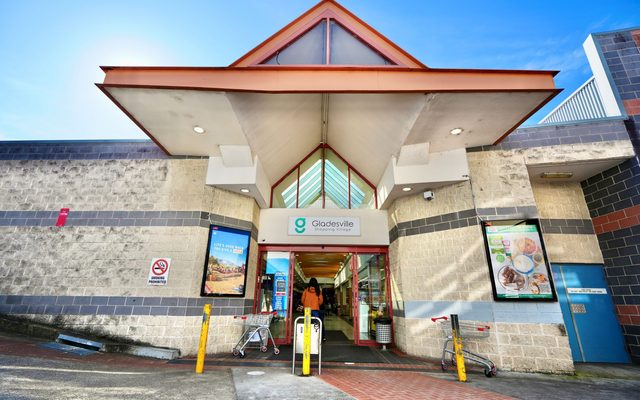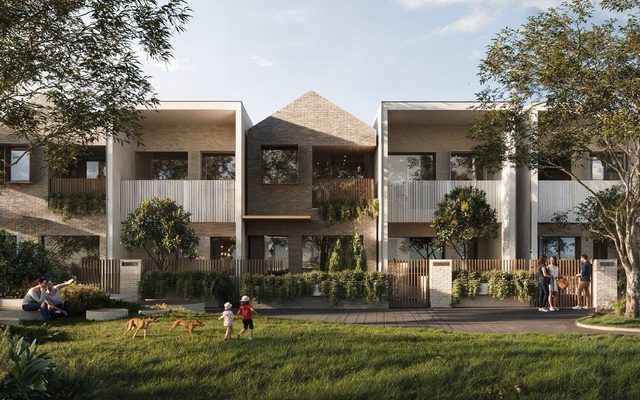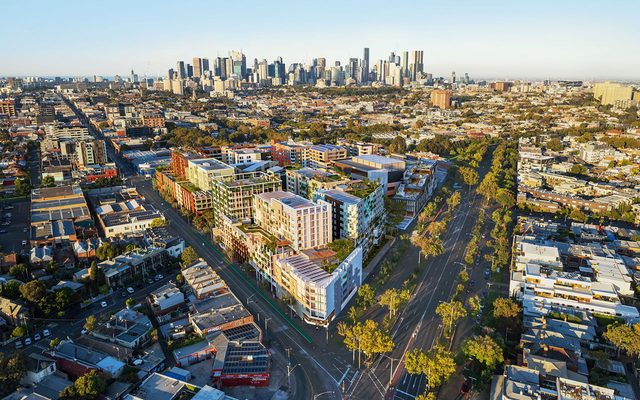This article is from the Australian Property Journal archive
INVESTOR and developer Cedar Pacific has picked up a 7,000 sqm build-to-rent and affordable housing development block in Canberra from the ACT government, as it further realises its $1 billion ambitions in the growing sector.
Cedar Pacific has outlaid $30 million for the Turner site, known as Block 3 Section 57, where it will build at least 270 dwellings along the Northbourne Avenue corridor and close to the light rail, shops and services.
At least 15% of the homes must be affordable rentals, meaning 40 of the units will fall under this bracket.
The ACT government said it is supporting community housing providers to deliver build-to-rent projects with an affordable rental component as part of its $80 million Affordable Housing Project Fund.
Cedar Pacific chief investment officer David Hill told Australian Property Journal that the project presented an opportunity to deliver housing with an affordable component during a “critical housing supply situation”.
While comparatively high to the rest of the country, Canberra’s vacancy rate is currently sitting at just 1.7%, according to Domain.
The ACT government released the Turner site through its Suburban Land Agency in October of 2022. The Suburban Land Agency has been steadily releasing land to unlock new housing supply, with the territory government expecting its population to reach 500,000 people by 2027.
JLL’s Tim Mutton sold the land on behalf of the Suburban Land Agency. He said Canberra is “well-positioned” for build-to-rent developments.
Cedar Pacific building out strategy
Hill told Australian Property Journal that this Canberra build-to-rent site presented a “great opportunity”, noting the city’s transient population and high proportion of renters, and the site’s position opposite the light rail, within walking distance to shops and services in Braddon, and close to Australian National University.
Cedar Pacific, active in both Australia and New Zealand, is building out its strategy and has a $1 billion build-to-rent pipeline after raising $500 million from investors a year ago. It has two active projects – in Brisbane, a 32-storey tower at 50 Quay Street with 475 apartments, with 50% being affordable, and in Auckland, 358 apartments in a 39-storey tower.
“Historically, our activity has largely been in student accommodation. As part of our broader living sector strategy, we’re now pursuing co-living and build-to-rent opportunities. Build-to-rent is a natural progression for us, and we’re seeing appetite in the sector from global investors, pension funds, sovereign wealth funds, and insurance agencies,” Hill said.
“We’re looking to gain exposure to the broader living sector, due to its resilient cash flow properties in being defensive, and an inflationary hedge. We’re certainly positioning ourselves to be able to provide access across the living spectrum.”
Hill said Cedar Pacific is in conversation with potential investors for its new project in Turner.
In April this year, Cedar Pacific teamed up with Sumitomo Forestry to develop a $1.2 billion sustainability-focused build-to-rent portfolio across Australia and New Zealand, however, the Japanese timber management company is not involved with the Turner project.
EY has modelled the possibility of some 150,000 build-to-rent homes being delivered over the next 10 years. National cabinet’s National Housing Accord kicked off this month, targeting 1.2 million “well-located” homes over five years, observers have been hopeful growing investment in the build-to-rent sector could see it make a valuable contribution to the much-needed supply.
Colliers estimates there were 4,790 completed build-to-rent apartments in 2023, with a further 3,810 completions predicted for 2024. The firm expects that by 2026 this asset class will grow to 16,500 apartments.
The federal government’s proposed build-to-rent tax incentives are seen to be part of the attractiveness of the sector for institutional capital, but a bill has been delayed in the Senate after the Coalition and Greens voted against the proposal and ordering it to be sent to an inquiry in September.




